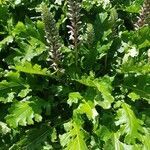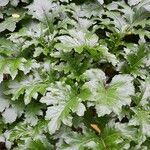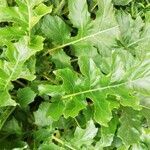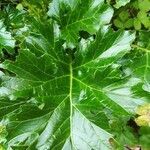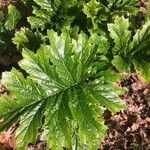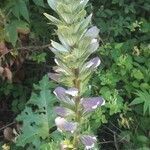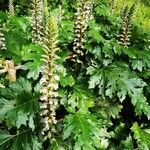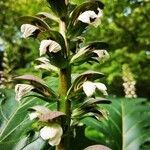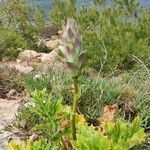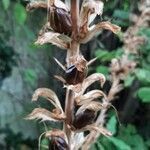A perennial herb. It has an underground stem or rhizome. It grows 30-80 cm tall. The leaves near the base are 40 cm long and 25 cm wide. The flowering spike is 30-40 cm tall. This can have 120 flowers. A flower is tube shaped and 5 cm long. It has tubers that form large clumps.
